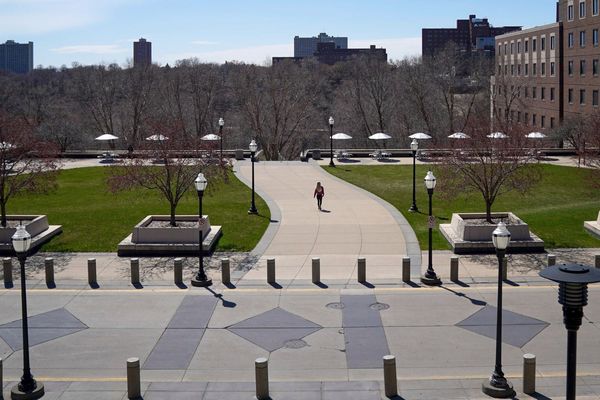After toiling for over four months preparing salt pans, salt farmers in Prakasam district were gearing up to make hay in May, when summer reaches its peak. Now, their hopes of getting a decent return on their back-breaking labour look bleak, thanks to the incessant unseasonal rains in coastal Prakasam over the last 15 days.
The situation is akin to that in 2010 when cyclonic storm Laila struck the Prakasam coast, snatching away the just-scrapped salt from the pans, laments a group of salt producers in Motumala village near Kothapatnam. It is in May that salt production peaks.
‘’We will not be bothered if there are a couple of spells of rain during the summer. But the continual showers over the past two weeks have left us clueless as to what to do,” complains another group of salt producers in coastal Biramgunta village.
Also read: How climate change is making salt farming unsustainable
‘’Going by the trend, we cannot resume salt production in the next 20-25 days since the salt content in the water is less,” they add, taking stock of the loss caused by the sudden downpour.
‘’We were hoping for a good season, with the weather officials predicting heatwave-like conditions in May. But the rains have played a spoilsport,” adds salt producer Ragava Rao from Padarthi village. ‘’If rains continue unabated, it will be a truncated season this year,’‘ says Prabakar Reddy, another salt farmer.
‘’In the present situation, salt production cannot be taken on a large scale this year,’‘ complains farmer Ramakrishna, who had taken up salt production on five acres with a loan from private moneylenders as institutional credit remains elusive to many of them.
Start of the season
The strenuous work starts in December when farmers repair bunds, stamp the earth and overhaul the electric motors, before pumping in water with a high concentration of salt into the pans. They continue the salt production till July, provided there is no heavy rain during the period, says Andhra Pradesh Rythu Sangam Kothapatnam district secretary S. Swamy Reddy. Many salt farmers sell their produce as soon as it is harvested because they lack the facilities to store it till the monsoons and the winter when prices shoot up.
Poor road connectivity adds to the woes of the salt producers who carry the harvested salt on their head from the remote salt pans up to the main road in villages such as Biramgunta, Motumala, Kothapatnam and Gundamala.
The Union and State governments should consider bringing salt pan works under the purview of the Mahatma Gandhi National Rural Employment Scheme as labour shortage and high labour cost make it difficult for salt producers to break even, he says, adding that the government should also a fix minimum support price for salt and intervene when the market prices fall below that. The price of salt remains highly volatile, fluctuating between ₹80 per quintal and ₹200 per quintal depending on demand and supply.







